Find the position of the image formed by the lens combination given in the Fig.
 Solution in Gujrati
Solution in Gujrati
Image formed by the first lens
1v1−1u1=1f1
1v1−1−30=110
The image formed by the first lens serves as the object for the second. This is at a distance of (15−5)cm=10cm to the right of the second lens. Though the image is real, it serves as a virtual object for the second lens, which means that the rays appear to come from it for the second lens.
1v2−110=1−10
orv2=∞
The virtual image is formed at an infinite distance to the left of the second lens. This acts as an object for the third lens.
1v3−1u3=1f3
or1v3=1∞+130
orv3=30cm
The final image is formed 30 cm to the right of the third lens.
Topper's Solved these Questions
- RAY OPTICS AND OPTICAL INSTRUMENTSBOOK - NCERT GUJARATICHAPTER - RAY OPTICS AND OPTICAL INSTRUMENTSEXERCISE - EXERCISES
40 Videos
- NUCLEIBOOK - NCERT GUJARATICHAPTER - NUCLEIEXERCISE - ADDITIONAL EXERCISES
9 Videos
- SEMICONDUCTOR ELECTRONICS: MATERIALS, DEVICES AND SIMPLE CIRCUITSBOOK - NCERT GUJARATICHAPTER - SEMICONDUCTOR ELECTRONICS: MATERIALS, DEVICES AND SIMPLE CIRCUITSEXERCISE - ADDITIONAL EXERCISES
8 Videos
Similar Questions
A small candle, 2.5 cm in size is placed at 27 cm in front of a concave mirror of radius of curvature 36 cm. At what distance from the mirror should a screen be placed in order to obtain a sharp image? Describe the nature and size of the image. If the candle is moved closer to the mirror, how would the screen have to be moved?
View SolutionIn a periodic table the average atomic mass of magnesium is given as 24.312 u. The average value is based on their relative natural abundance on earth. The three isotopes and their masses are 2412Mg(23.98504u),2512Mg(24.98584u)and2612Mg(25.98259u). The natural abundance of 2412Mg is 78.99% by mass. Calculate the abundances of other two isotopes.
View SolutionThe number of silicon atoms per m3 is 5×1028. This is doped simultaneously with 5×1022 atoms per m3 of Arsenic and 5×1020 per m3 atoms of Indium. Calcualte the number of electrons and holes. Given that ni=1.5×1016m−3. Is the material n-type or p-type?
View SolutionFind the position of the image formed by the lens combination given in Fig.
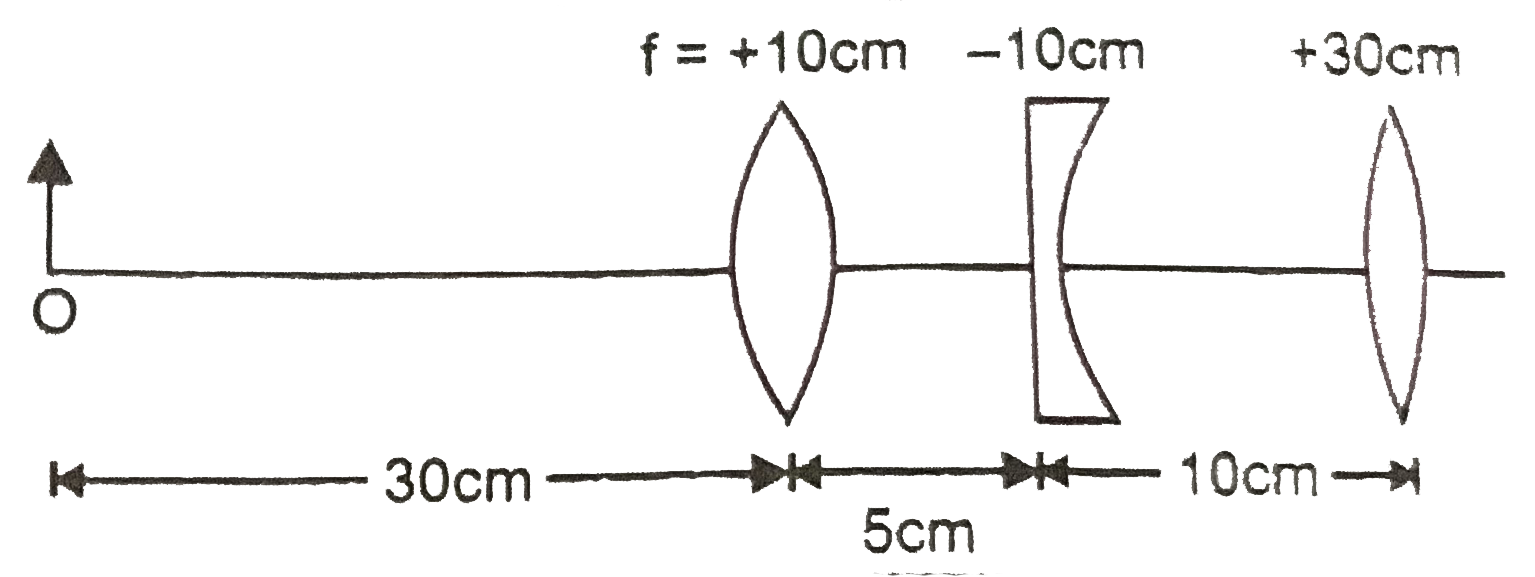 .
.
View Solution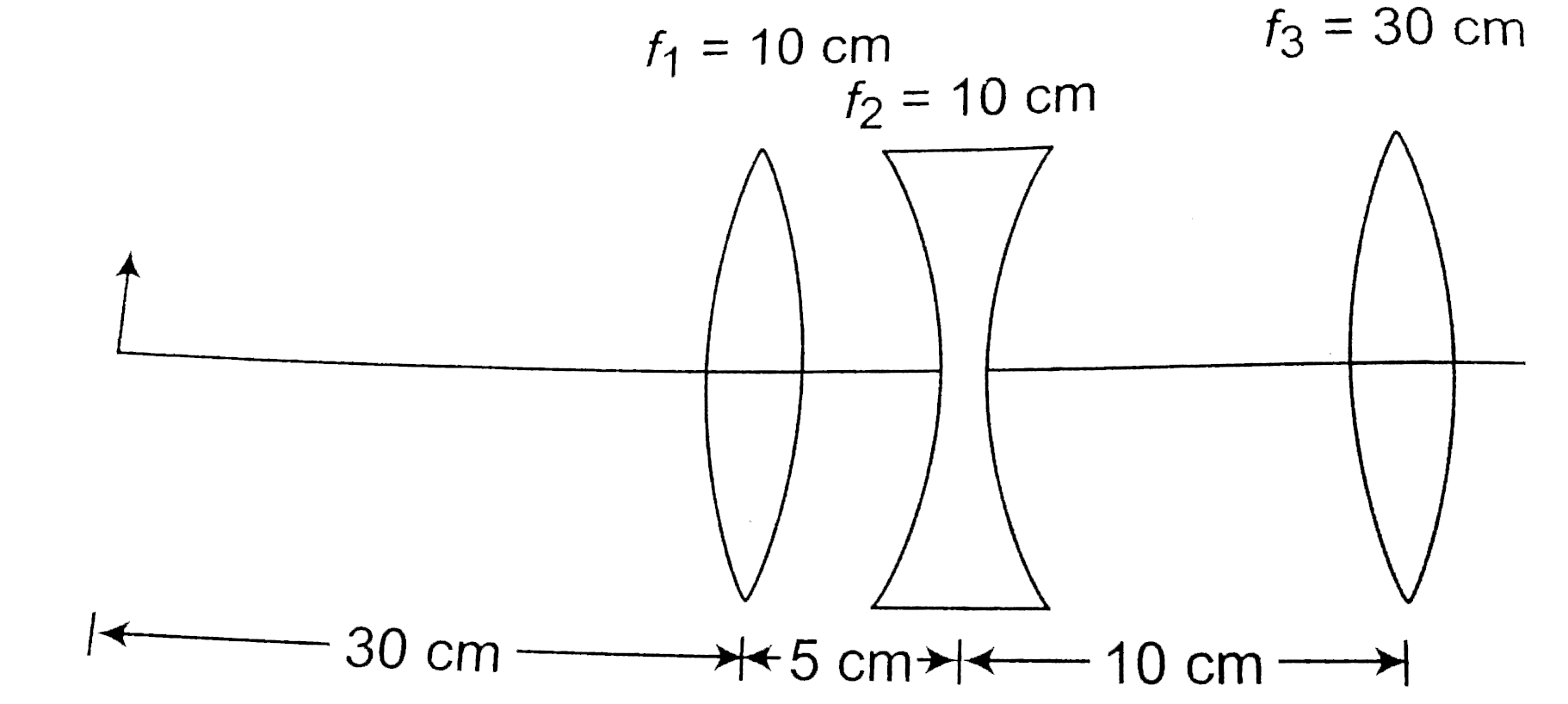
The position of fical image formed by the given lens combination from the third lens will be at a distance of f1=+10cm,f2=−10cm,f3=+30
View SolutionA point ofject 'O' lies in front of the lens as shown in figure. Find the final position of image formed by the combined lenses.
View Solutionचित्र 9.22 में दिए लेंसों के संयोजन द्वारा निर्मित प्रतिबिम्ब की स्थिति ज्ञात कीजिए ||
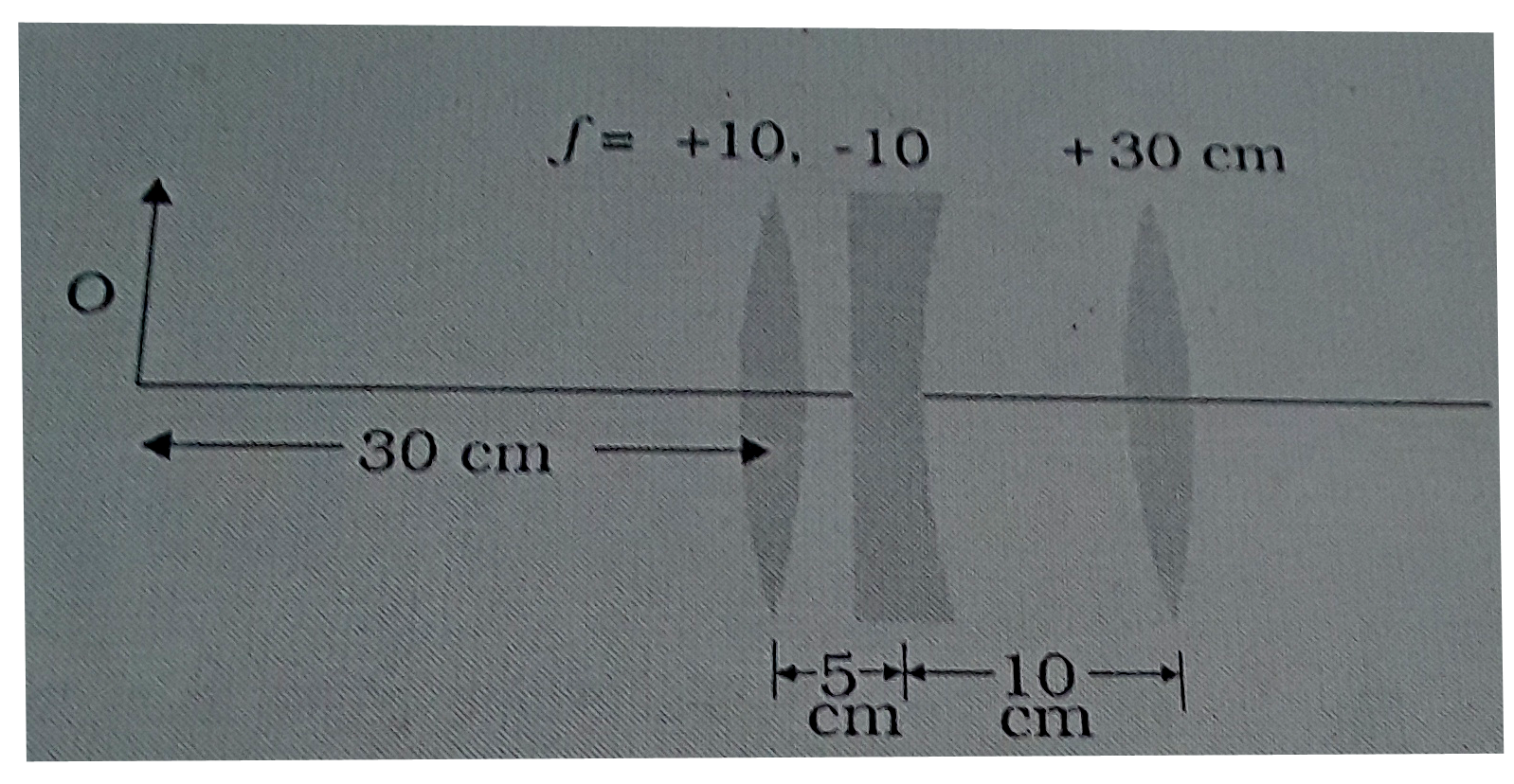
View Solutionदो लेन्स,जिनकी क्षमतायें क्रमशः +3D और −5D है, को मिलाकर एक संयुक्त लेन्स बनाया गया। इस संयुक्त लेन्स से 50 सेमी की दूरी पर रखी वस्तु के प्रतिबिम्ब की स्थिति ज्ञात कीजिये।
View Solutionएक संयुक्त सूक्ष्मदर्शी में अभिदृश्यक लेंस द्वारा बना प्रतिबिम्ब होता है-
View SolutionFind the position of the image formed by the lens combination given in the fig.
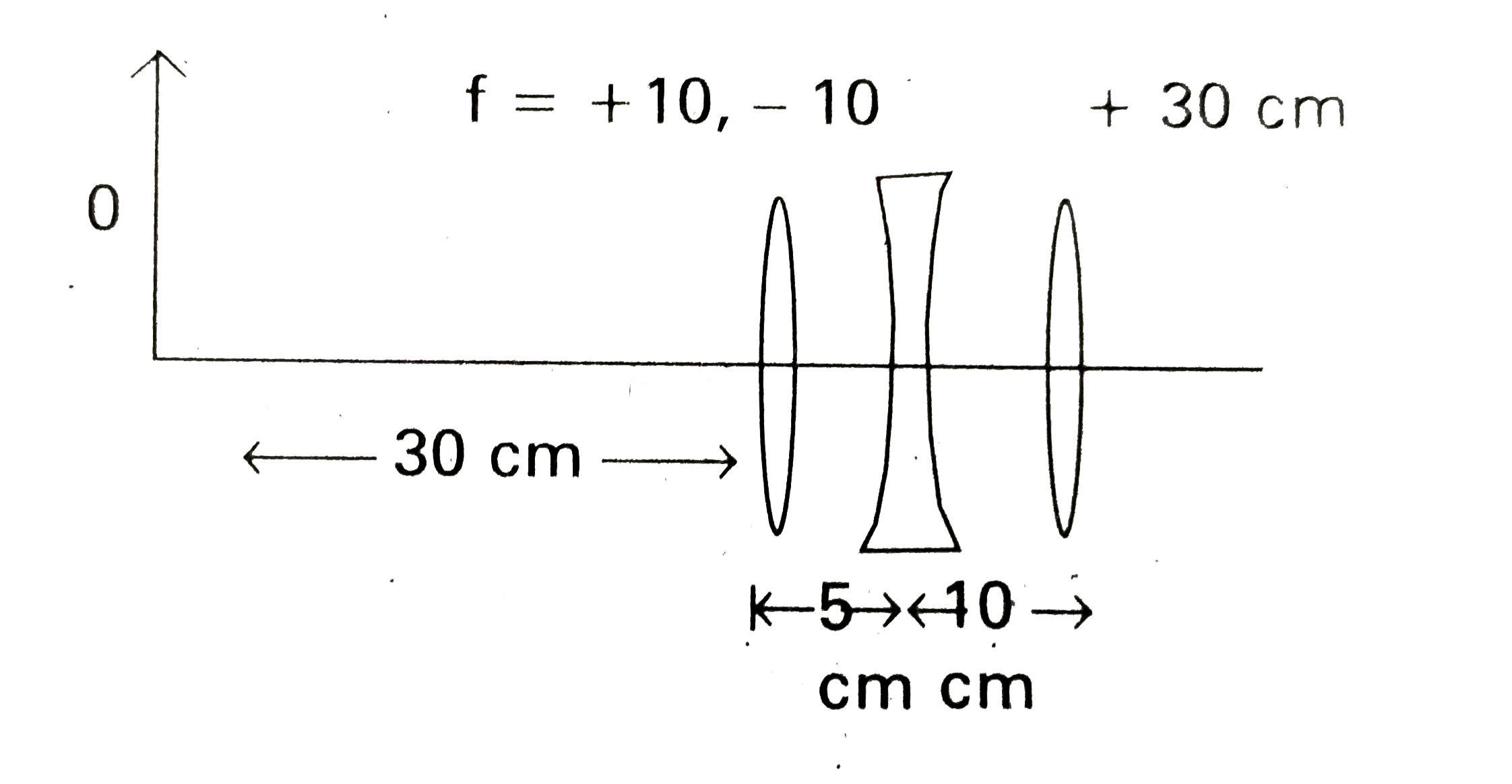
View SolutionMatch the position of object given in column-I with the corresponding position of image formed by convex lens given in column-II.
View Solutionचित्र 9.74 में प्रदर्शित लेंस निकाय द्वारा बने वस्तु के प्रतिबिम्ब की स्थिति ज्ञात कीजिए |
View Solutionचित्र में दिए गए लैंसों के संयोजन द्वारा निर्मित प्रतिबिंब की स्थिति ज्ञात कीजिए।
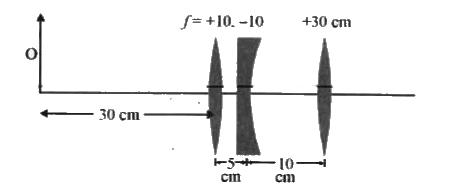
View SolutionFind the position of the image formed by the lens combination given in the figure.
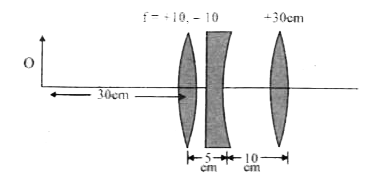
View SolutionFind the position of the image formed by the lens combination given in the following figure :
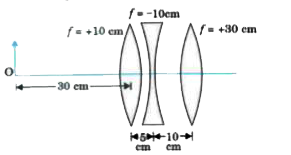
View Solution
